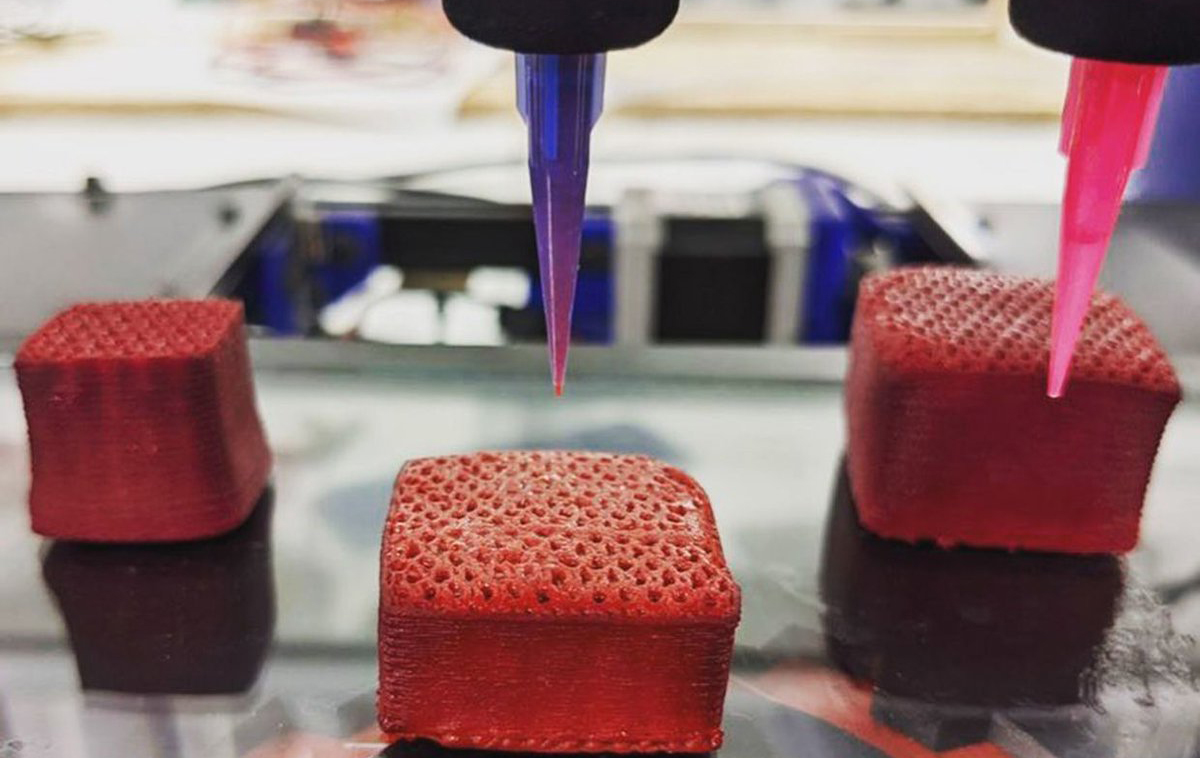Animal and Plant Cells Combined for 3D-Printed Steaks
22. 2. 2021 | IEEE Spectrum | spectrum.ieee.org
Plant-based burgers that taste a heck of a lot like the real thing are now at your local Burger King. And you can find realistic meatless ground beef and sausages at grocery stores. As the next big thing in sustainable and cruelty-free meat, some startups are growing it in labs from animal cells. In December, Singapore became the first country to allow sales of lab-grown chicken from U.S. startup Just Eat.
But the founders of Barcelona-based Novameat want to take a bigger leap. They plan to go beyond chicken strips and processed “meat” to the chewy, muscle-y, juicy taste of whole meat cuts. “We want to create the Tesla Roadster or iPhone moment for the future of food,” says CEO and founder Giuseppe Scionti. The company is using 3D-printing to get there. In what could be a game-changer for the alternative meat industry, they have now made the world’s largest piece of 3D-printed whole-cut meat analog. And they say their 3D-printing process 150 times faster than their competitors, allowing them to make 1.5 tons of meat substitute per hour.

Creating a sirloin steak, with its fibrous protein and marbled fat, from plant-based proteins is a tough recipe to perfect. Novameat’s microextrusion technology, which produces 100–500 micrometer-wide fibers from different ingredients and combines them in precise ratios and organized microstructures, is key to mimicking the mouthfeel, taste, appearance, and nutritional properties of animal meat. The three-year old startup has been using vegetable fat and non-soy plant proteins to make realistic 3D-printed steaks.
Read more at IEEE Spectrum
Image Credit: Novameat
-jk-




